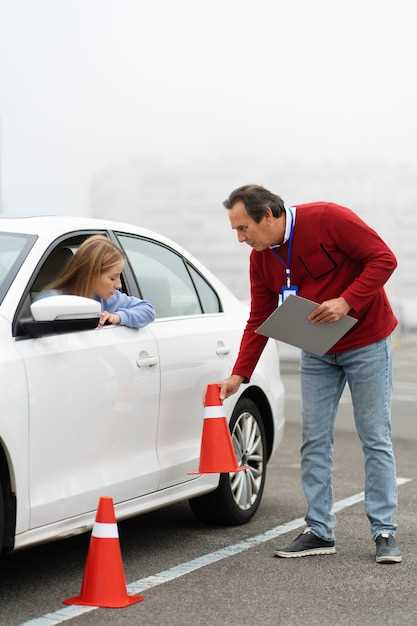
Tips for Safe Overtaking on the Track

In the high-speed environment of track driving, ensuring safety during overtaking maneuvers is crucial. The thrill of racing can be exhilarating, but it also comes with significant responsibilities. Understanding the proper techniques for overtaking not only enhances your driving experience but also promotes a safer atmosphere for all participants on the track.
Prioritizing safety requires understanding the nuances of track dynamics and the behavior of various vehicles. Each track presents unique challenges, from tight corners to long straights, demanding that drivers remain vigilant and respectful of their surroundings. Before attempting an overtaking maneuver, it is essential to assess the situation thoroughly, considering factors such as your speed, the speed of the vehicle you intend to overtake, and the overall position of other cars on the track.
Communication among drivers plays a vital role in ensuring safe overtaking. Using turn signals and understanding common hand signals can significantly reduce the chances of miscommunication and potential accidents. By emphasizing clear and defined communication, drivers can effectively convey their intentions, fostering a safer and more coordinated racing environment. By implementing these safe overtaking tips, drivers can maximize both their enjoyment and the safety of track driving for everyone involved.
Understanding Track Layouts for Safe Passing
To ensure safety during track driving, it is crucial to comprehend the layout of the racetrack you are on. Each track has unique characteristics, including straights, curves, and elevation changes, which directly influence overtaking opportunities.
Know the Corners: Identify the types of corners present–whether they are tight, sweeping, or hairpin bends. Tight corners often present limited overtaking chances compared to sweeping turns, which allow for more maneuverability. Understanding corners helps in timing your approach to safer overtakes.
Identify the Racing Line: The racing line offers the fastest path around the track. Knowing where this line is allows you to predict the behavior of competitors. Passes are safest when executed before entering a corner, aligning alongside or ahead of another driver to maintain control and stability.
Utilize the Track’s Width: Many tracks are wider than they appear at first glance. Make use of the available space to execute safe passes. When approaching another vehicle, position your car toward the edge of the track, giving ample room for both you and your competitor, reducing the chance for contact.
Watch for Elevation Changes: Some tracks feature significant elevation changes that can affect visibility and grip. Be cautious when trying to overtake on hills, as the driver in front may have a better line of sight to the track’s next section. Ensure that you can see any potential hazards before committing to a pass.
Communicate Effectively: Use your mirrors and indicators to communicate your intentions. Clear communication can often prevent misunderstandings with fellow drivers. A driver who sees you signaling a maneuver is more likely to allow space for a safe pass.
Practice Situational Awareness: Stay aware of the other cars around you. Keep track of their positions and speeds to better gauge when and where it is appropriate to pass. Anticipating the actions of others helps in making informed decisions that prioritize safety.
In summary, understanding the track layout is vital for executing safe overtakes. By considering corners, racing lines, track width, elevation changes, effective communication, and situational awareness, drivers can enhance their safety while enjoying the thrill of track driving.
Communicating Clearly with Other Drivers During Overtakes

Effective communication is crucial when overtaking on the track. Drivers should utilize a combination of visual and auditory signals to ensure safety and minimize the risk of accidents. Before attempting an overtake, check your mirrors and blind spots to assess the position of surrounding vehicles.
Using turn signals appropriately is essential. Indicate your intention to overtake well in advance, giving the driver in front ample time to react. A clear signal can prevent misunderstandings and allow for smoother maneuvers. Additionally, once you have completed the overtake, turn off your signal to indicate that you are no longer in the process of changing lanes.
Eye contact is another vital aspect of communication on the track. Making brief eye contact with other drivers can convey intent and awareness. If possible, establish a connection with the driver you are about to overtake. This mutual acknowledgment can build trust and promote cooperative behavior.
Furthermore, using hand signals can supplement both verbal and visual communication. Simple gestures, such as raising a hand to acknowledge that you are aware of their presence, can enhance clarity during a passing maneuver. Remember, communication is a two-way street; be attentive to the reactions of others while overtaking.
In high-speed situations, it’s essential to rely on a combination of techniques to convey your actions effectively. Voice communications through race radios, if permitted, can provide real-time updates about your intentions. However, always prioritize non-verbal cues because they are universally understood in the racing environment.
Lastly, patience is key. If you sense that the driver ahead is unaware of your presence or hesitant to move aside, wait for a safe opportunity rather than forcing an overtake. Clear communication should foster cooperation instead of creating tension between drivers. The goal is to promote a safe and enjoyable track experience for everyone involved.
Timing Your Overtakes: When and Where to Execute Safely

Effective overtaking on the track requires precise timing and situational awareness to ensure safety for both you and other drivers. The right moment to execute an overtake often depends on factors such as speed differentials, track layout, and the behavior of other cars.
Start by identifying sections of the track where overtaking is feasible. Look for long straights or wide corners that provide enough space to maneuver safely. These areas allow you to build speed and close the gap to the car in front without compromising control.
Monitor the *driver’s* behavior ahead of you. If they show signs of hesitation, such as inconsistent cornering or braking later than usual, this may indicate an opportunity for a well-timed overtake. Always assess whether the driver is aware of your presence and prepared to give you space.
When you decide to overtake, execute your maneuver when you have a clear view of the track ahead and can anticipate upcoming turn angles. Ensure that you have sufficient speed advantage; this reduces the risk of potential collisions. Engaging your overtake at the apex of a corner can be risky, so choose the moment wisely.
Communication is also key in track driving. Use hand signals or your car’s lights to indicate your intention to overtake. This helps other drivers to anticipate your move, enhancing the overall safety of the track environment.
Finally, always have a backup plan. If your overtake does not go as planned, be prepared to back off and avoid creating dangerous situations. Remember, a safe overtake prioritizes the well-being of all participants on the track.
















